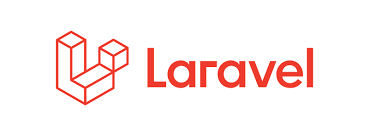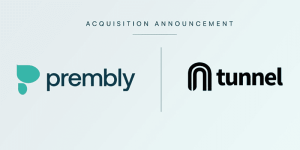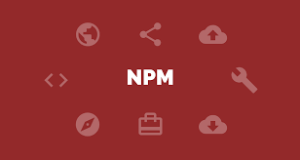
Introduction
Laravel is a popular open-source PHP framework used for web application development. It was created by Taylor Otwell in 2011 and has since become one of the most popular PHP frameworks, with a large community of developers and a growing ecosystem of tools and packages.
In this article, we’ll take a look at what Laravel is, why it’s useful, and how to get started with building your first Laravel application.
What is Laravel?
Laravel is a Model-View-Controller (MVC) framework for PHP. It provides a set of tools and conventions for organizing and building web applications, including routing, controllers, models, views, and a database query builder.
One of the key benefits of Laravel is its focus on simplicity and elegance. It aims to make common web development tasks, such as routing, authentication, and database interactions, easy to implement and maintain.
Laravel also comes with a built-in dependency injection container, which makes it easy to manage object dependencies and facilitate testing. It also includes a powerful command-line interface (CLI) called Artisan, which can perform common tasks and extend the framework with custom commands.
Why use Laravel?
There are several reasons why Laravel is a popular choice for web development:
- Laravel follows modern PHP standards and best practices, such as using namespaces and PSR-4 autoloading.
- Laravel comes with a large set of features out-of-the-box, including routing, controllers, views, database interactions, and more. This means you don’t have to reinvent the wheel or spend a lot of time setting up basic functionality.
- Laravel has a large and active community of developers, which means you can find help and support easily if you run into any issues.
- Laravel has excellent documentation and a growing ecosystem of third-party packages and tools. This makes it easy to find solutions to common problems and extend the framework with additional functionality.
Getting started with Laravel
To get started with Laravel, you’ll need to have PHP and a web server (such as Apache or Nginx) installed on your development machine. You’ll also need a database management system, such as MySQL or PostgreSQL if you plan on building a database-backed application.
Laravel uses the Composer dependency manager to manage its own dependencies and third-party packages. Make sure you have Composer installed on your machine before proceeding.
Once you have all the prerequisites installed, you can install Laravel by running the following command in your terminal:COPYCOPY
composer create-project –prefer-dist laravel/laravel sample-projectThis will create a new Laravel project called “sample-project” in a new directory. Replace “sample-project” with the desired name for your project.
You can then navigate to the project directory and start the development server by running the following commands:COPYCOPY
cd sample-project
php artisan serve
The development server will start up and you can visit your Laravel application at http://localhost:8000 in your web browser.
Basic Laravel structure
Laravel follows a typical MVC structure, with routes defining the application’s URL endpoints, controllers handling incoming requests, and views rendering the final output to the user.
The application’s routes are defined in the routes directory, which contains several files for organizing your routes. The web.php file is used for defining routes that are accessible to the end user, while the api.php file is used for defining routes for API requests.
Here is an example of a simple route definition in web.php:COPYCOPY
Route::get(‘/’, function () { return view(‘welcome’); });This route listens for a GET request to the root URL of the application and returns the welcome view.
Controllers are used to handling incoming requests and perform any necessary logic before rendering a view or returning a response. you can create a controller class by run the following command in your terminal:COPYCOPY
php artisan make:controller TestController
This will create a TestController class inside App/Http/Controller Directory
Replace “TestController” with the name you would like to give your controller class
Here is an example of a simple controller action:COPYCOPY
This action fetches all the posts from the database using the Eloquent ORM and passes them to the posts.index view.
public function index() { $posts = Post::all(); return view(‘posts.index’, [‘posts’ => $posts]); }Views are used to render the final output to the user. Laravel uses the Blade templating engine, which allows you to define dynamic views using PHP syntax. Here is an example of a simple Blade view:COPYCOPY
@extends(‘layouts.app’) @section(‘content’) <h1>Blog Posts</h1> <ul> @foreach ($posts as $post) <li>{{ $post->title }}</li> @endforeach </ul> @endsectionThis view extends the layouts.app layout and defines a content section within it. The view then iterates over the $posts variable and displays a list of post titles.
Laravel also includes a powerful database query builder and Eloquent ORM, which makes it easy to interact with your database and perform common tasks such as querying, inserting, updating, and deleting records.
Here is an example of using the query builder to fetch all the posts from the database:COPYCOPY
$posts = DB::table(‘posts’)->get();And here is an example of using the Eloquent ORM to fetch all the posts:COPYCOPY
$posts = Post::all();Laravel also includes a built-in authentication system, which makes it easy to implement login and registration functionality for your application. I will discuss this in more detail in a future article, so stay tuned.
Conclusion
Laravel is a powerful and popular PHP framework for web application development. It provides a set of tools and conventions for organizing and building web applications, including routing, controllers, views, and a database query builder. Laravel is known for its simplicity and elegance, and it has a large and active community of developers.


